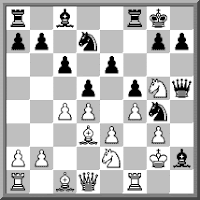- Donaldson's review is now available on Silman Chess. I suspect it has already been published somewhere (possibly in print) a couple of months ago, as Gambit's infopage has already quoted it for some time.
- In Dansk Skak Union's 'Skakbladet' (available as a pdf-file for download) there is a review (in Danish) by Peter Heine Nielsen.
Below you can see the original text (in danish) and my attempted translation.
An outstanding book. In addition to the authors, Leif Erlend Johannessen has been an advisor and Simen Agdestein has written a preface and been involved in the chapters with illustrative games. Agdestein has had great success with the Dutch Stonewall himself and describes the typical plans well. The Stonewall is a strategical opening with great depth and exactly for this reason one of the authors - Ivar Bern - has used it successfully in correspondence chess where he won the World Championship.
Computerne tror oftest på Hvid, men forstår ikke altid de atypiske stillinger, hvor Sort måske har optisk svage felter og en dårlig løber, men i virkeligheden står udmærket. Ikke blot rehabiliterer de en undervurderet åbning, men de gør det med inspirerende kapitler bakket op med personlige erfaringer fra førende eksperter. Og selv om de vedkender sig deres inspiration fra Jens Kristiansens berømte artikel om åbningen her i Skakbladet, fornemmer man, at her videreformidles en slags fælles norsk skakforståelse.
The computers normally prefer White but don't always understand the atypical positions where Black has optical pawn weaknesses and a poor bishop but in reality has an excellent position. Not only do the authors rehabilitate an underestimated opening - they even do so by means of inspiring chapters supported by the personal experiences of leading experts. And although they admit being inspired by Jens Kristiansen's famous article on the opening here - in the 'Skakbladet' - you can sense that they are conveying a kind of common Norwegian chess perception.
Peter Heine Nielsen































